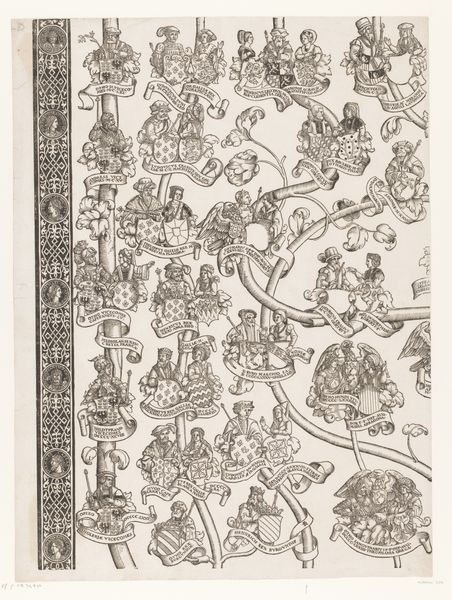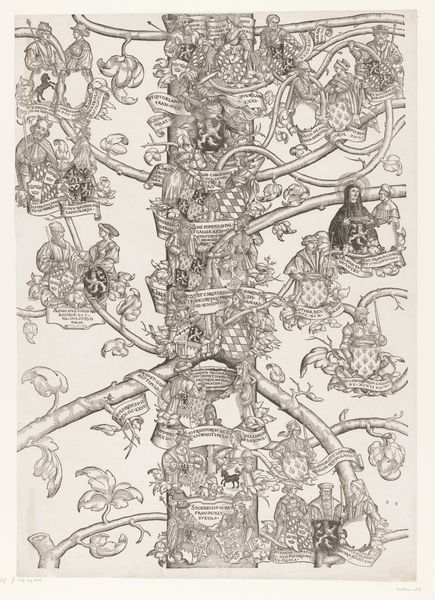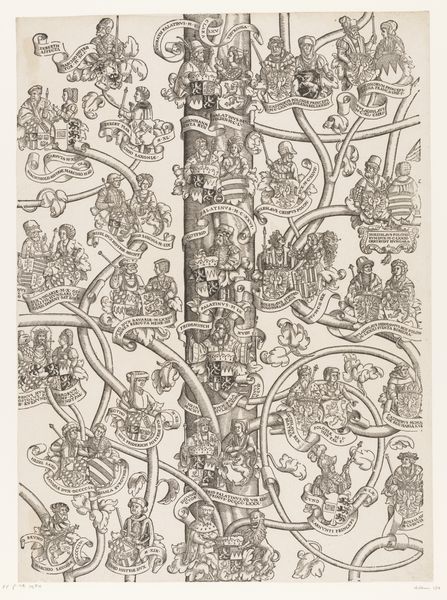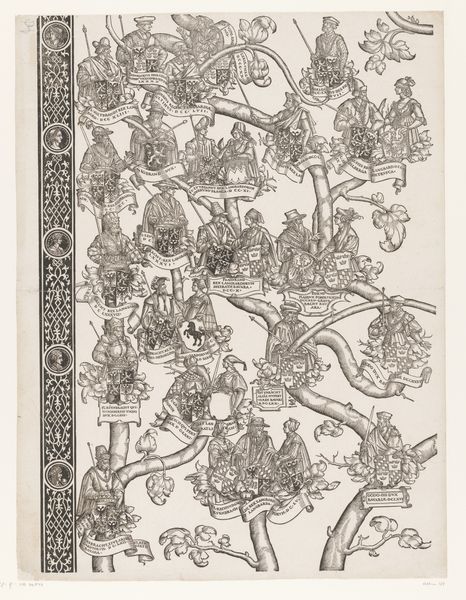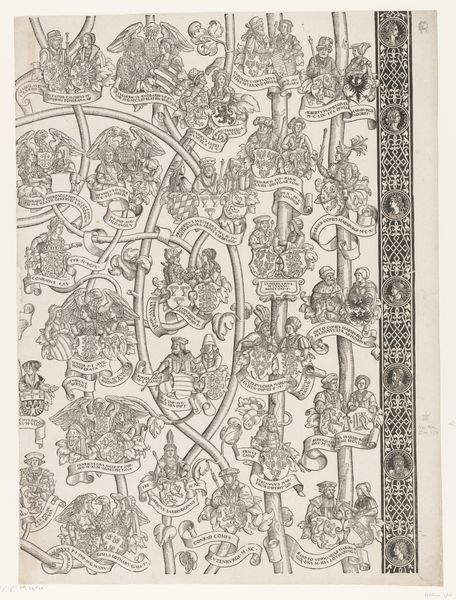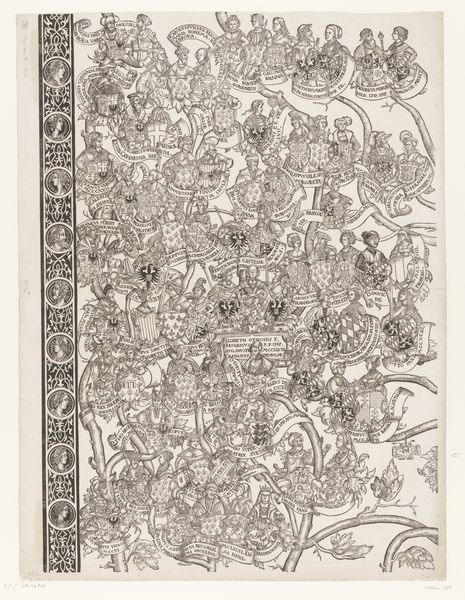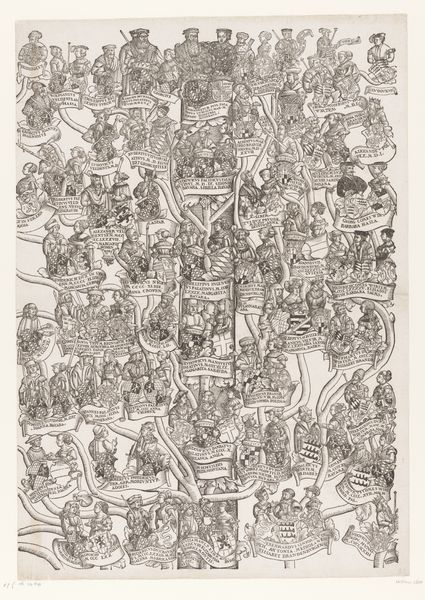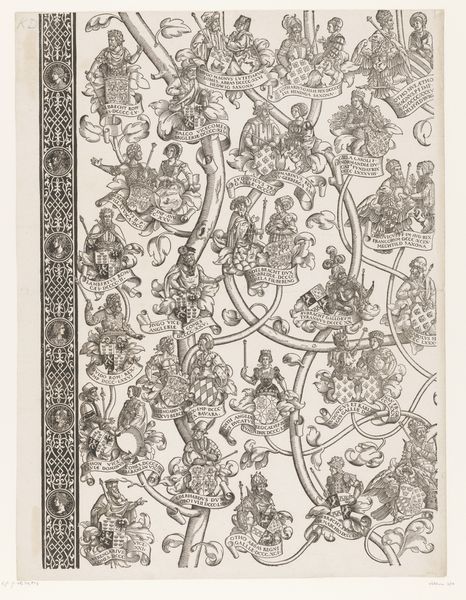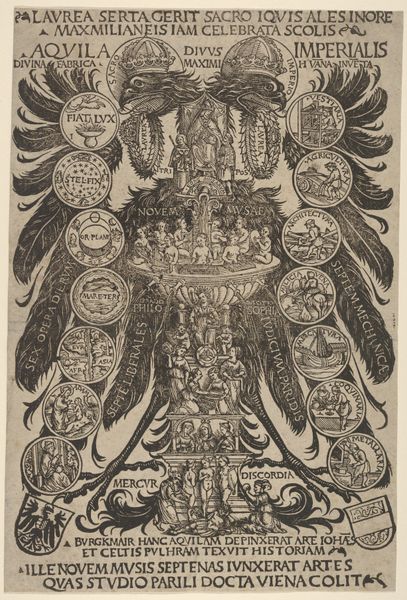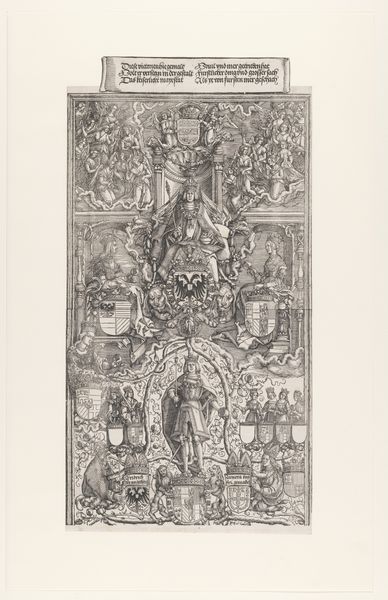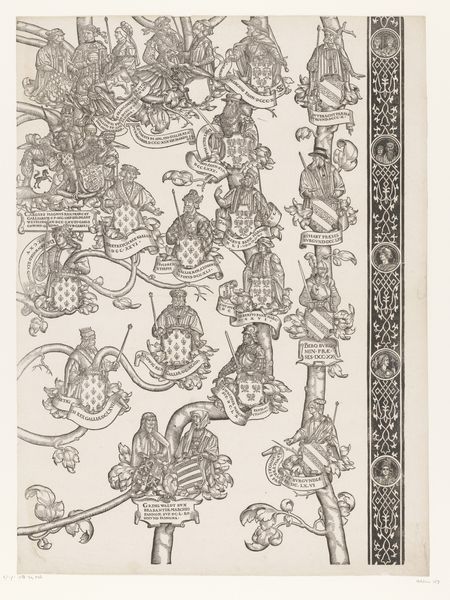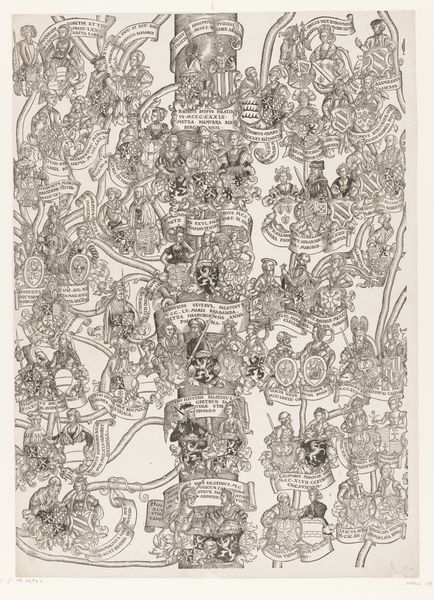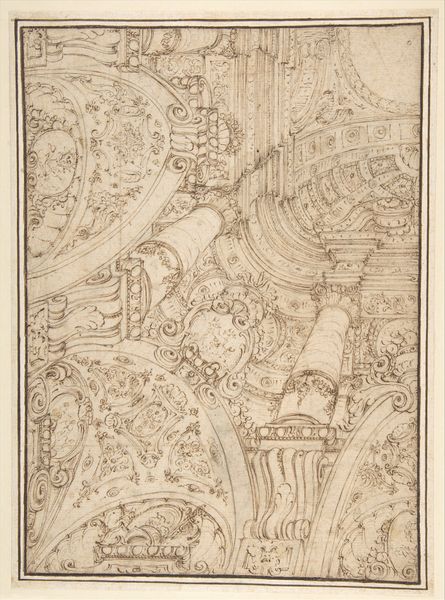
Stamboom van Frederik en Ottheinrich van Palts-Neuburg (plaat 5) 1535 - 1594
0:00
0:00
drawing, print, ink, engraving
#
drawing
#
allegory
#
pen drawing
# print
#
pen illustration
#
pen sketch
#
figuration
#
form
#
ink line art
#
ink
#
pen-ink sketch
#
line
#
pen work
#
history-painting
#
northern-renaissance
#
coloring book page
#
engraving
#
doodle art
Dimensions: height 625 mm, width 433 mm
Copyright: Rijks Museum: Open Domain
Curator: Looking at this complex genealogical rendering—a print from somewhere between 1535 and 1594, attributed to Jakob Clauser—what's your initial reaction? It's called "Stamboom van Frederik en Ottheinrich van Palts-Neuburg (plaat 5)", and it resides here at the Rijksmuseum. Editor: My first impression is one of incredible intricacy. It's so densely packed with detail; the interweaving branches create a labyrinthine effect. Almost dizzying! Curator: Exactly. It's more than just a family tree; it's a deliberate visual argument about power and lineage. Think about the historical context: the Northern Renaissance was a time of intense dynastic maneuvering and solidifying claims to legitimacy through bloodlines. The ‘Stamboom’ becomes a powerful statement of identity. Editor: I see the symbolic language. The tree itself, of course, represents growth, stability, the enduring nature of the family. And each figure meticulously placed, with their accompanying crests… it speaks volumes. I am also intrigued by the cross at the bottom right, as well as the little vignettes: people are engaging in common activities in most sections of the image. Is it possible to identify the origin and meanings behind these additional symbols? Curator: Well, yes. We know that the family tree format itself was becoming increasingly popular in courtly settings as visual displays of nobility. But this one... it elevates that to high art and complex visual rhetoric, a status report. It serves to highlight the family's claims and their connections through carefully constructed imagery and symbolic heraldry. Gender also plays a key role. Notice how specific unions solidify claims to specific territories. Editor: That’s interesting! In what way? Curator: Well, strategically selected or created unions of two important aristocratic families or people will create future opportunities to stake a claim for land or a higher position on behalf of their descendants. So by controlling marriage one can control the future! The selection of who to include and how to visually emphasize their position within the tree… it's all carefully calculated for maximum impact. Editor: Looking closer, it's almost like reading a story – the visual elements build a narrative around this family's ascent. Knowing these symbols is really key to reading this complicated drawing. Curator: Absolutely, decoding those symbols offers an extraordinary insight into the world view and self-presentation of the Palatine Neuburg family. The artwork encourages us to unpack not just their family history, but the very principles and power dynamics that shaped their identity. Editor: Seeing it in that light really deepens my understanding. I initially saw a dense drawing, but now it feels like an intricate map charting political and social strategy.
Comments
No comments
Be the first to comment and join the conversation on the ultimate creative platform.
